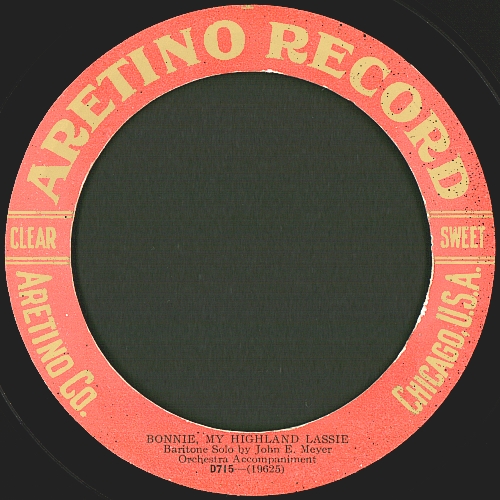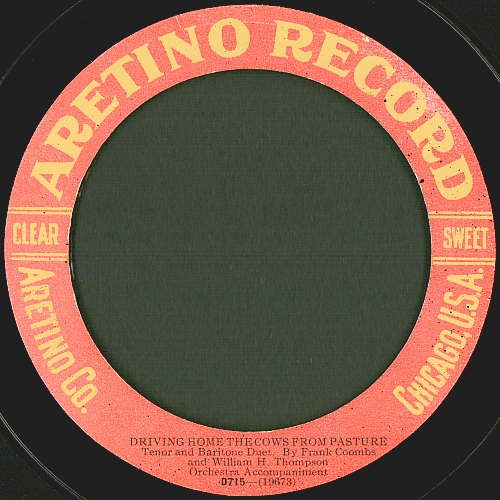 |
 |
| Bonnie, My Highland Lassie |
Driving Home The Cows From Pasture |
| John E. Meyer |
Frank Coombs and William H. Thompson |
| Aretino D715-A |
Aretino D715-B |
| (Columbia) Matrix# 19625 (Take 1, 2 or 3) |
(Columbia) Matrix# 19673 (Take 1, 2 or 3) |
| October 27, 1911 |
November 22, 1911 |
| New York, New York |
New York, New York |

